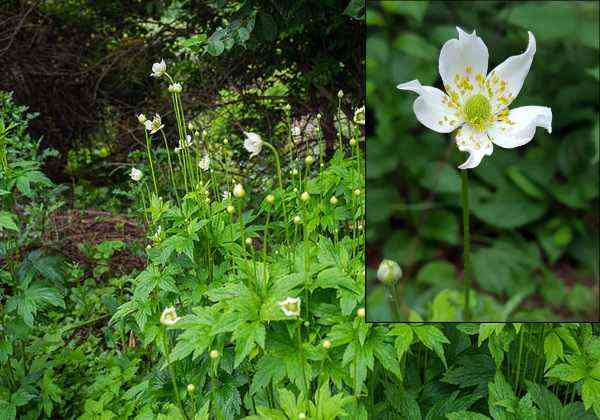Your cart is currently empty!
How To Care, Grow And Use Tomatillos
The Tomatillo plant, an odd-looking distant tomato cousin and one of the essential ingredients in Mexican cuisine, especially in green salsa.
Your cart is currently empty!
Photo:
Krzysztof Ziarnek, Kenraiz, CC BY-SA 4.0, via Wikimedia Commons
Thimbleweed is an excellent spring flower for the shaded or woodland garden, with flowers from summer to early fall. It is a good choice for naturalized areas or native wildflower gardens. It is not an aggressive species.
A few fine, short, soft hairs grow on the plant. It has a ramified stem that grows 60 to 100 cm tall above the small leaves that grow around the flower (involucre). The stalks of the basal leaves are long. They are divided into three sections, which are further subdivided.
Botanical Name: Anemone virginiana
Also Called: Tall Anemone
En français: Anémone de Virginie
Colour:
Blooms:
Sun / Shade:
Height:

Anemone virginiana is easily grown in average, dry to medium, well-drained, sandy-humusy soil. Though it prefers in full sun to part shade, it tolerates full shade. It is not as aggressive as most other anemone species.
You can propagate thimbleweed by seeds sown in fall or early spring. Or, divide older established plants.
Meadows, borders, and fence lines are its natural habitat. Ferns, False Solomon’s seal, may apple, yellow wood poppy, amsonia, asters, and sedges are all good companion plants.
This wild plant is spurned by animals due to its blistering sap. Even deer will avoid browsing the plant because all parts have a chemical which causes pain, blisters and irritation of the mouth that can develop into vomiting and diarrhea if ingested.
When consumed in large quantities, all parts of this plant are toxic. This plant is expectorant, astringent, and emetic. A decoction of its roots was used by indigeneous nations to treat coughs, tuberculosis, and diarrhoea.
The Tomatillo plant, an odd-looking distant tomato cousin and one of the essential ingredients in Mexican cuisine, especially in green salsa.
Pearly everlasting features yellow flowers enclosed by white papery bracts which grace this beautiful wildflower in summer.
Cultivate your own mini-orchard indoors with minimal effort and ingenuity with Tips On Growing Citrus Indoors Zone 7 or Lower. Learn the secrets to growing a lemon tree and other citrus fruits inside with the right type of tree, organic lemon, good quality soil and more!
New England Aster is a stunning late season bloomer with masses of purple petals with yellow cores, provides vital nutrition for pollinators.
Gardening in the springtime offers numerous benefits, both for you & the environment. Enjoy delicious fruits, vegetables, herbs & more while adding beauty to your home. Get growing w/ these tips: vegetables, herbs & annuals – ideal options for the spring season.
Styling your garden is a great way to enhance the appearance of a yard, and as a bonus, gardening is great for your mental health.
GardeningCalendar.ca gets some funding from advertisers. If you click on links and advertisements at no cost to you, the site may receive a small commission that helps fund its operation.
© 2025 J&S Calendars Ltd.
Leave a Reply
You must be logged in to post a comment.